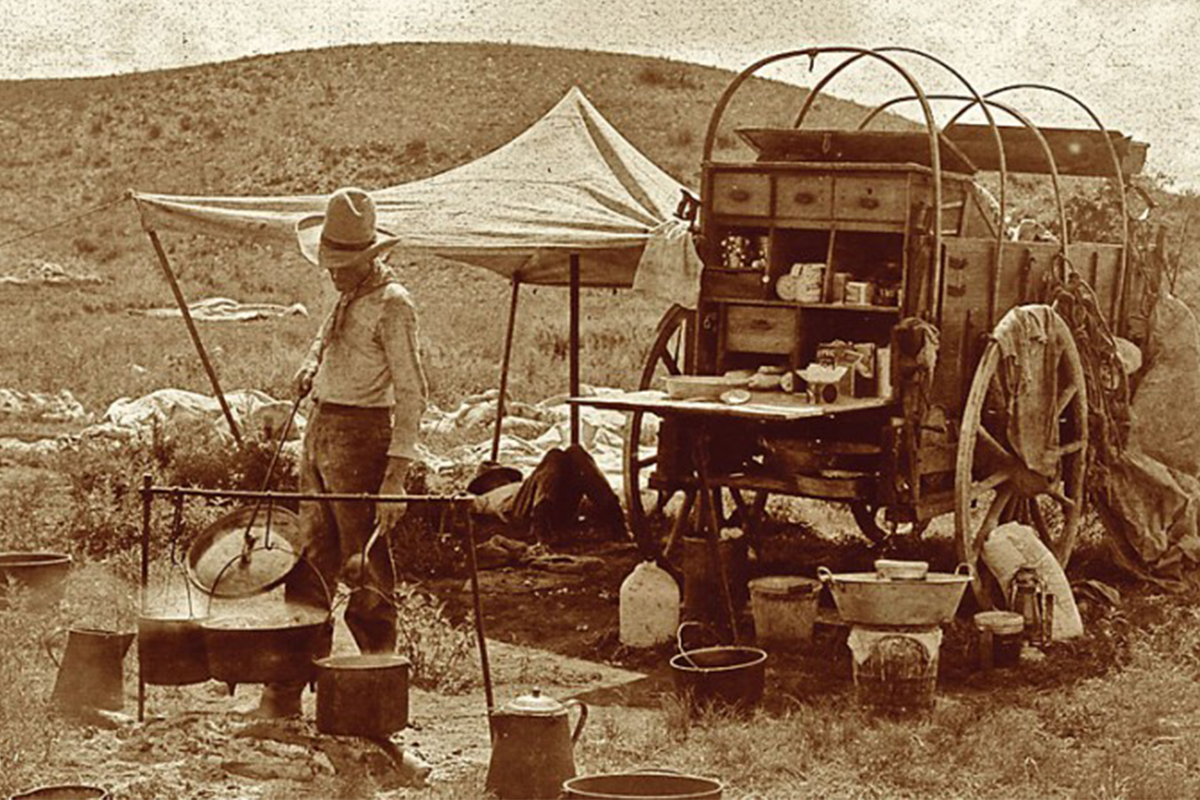
The mother ship of the trail drives was a broad-beamed, sturdily vehicle that carried virtually everything that ten men might need on a prairie voyage that might last as long as five months. Credit for the design of this wagon belongs to cattle baron Charles Goodnight, who in 1866 rebuilt a surplus Army he picked primarily for its durable iron axles. To the basic wagon bed where bulk goods such as foodstuffs and bedrolls could be stored. He added appendages attached a water barrel big enough to hold two days supply of water; on the other a heavy toolbox. On top were two bentwood bows to accommodate a canvas for protection against the sun and rain.
The innovation that made the Goodnight wagon unique at the time for all self-respecting wagons that followed was the design and installation of a chuck box. Perched at the rear of the wagon facing aft it had a hinged lid let down on a swinging leg to form a worktable.
Like a Victorian desk, the box was honeycombed with drawers and cubbyholes. Here and in the boot the cook stored his utensils and whatever food he might need during the day. Above them was a “possibles” drawer, a combination of a first-aid kit to a catch all, containing everything from calomel to sewing needles. The design proved so practical that cattle outfits all over the West imitated it using re-designed farm wagons and Army vehicles.
Inevitably the idea went commercial and major wagon builders, including the famous Studebaker Company, which sold chuck wagons for $75 to $100.





